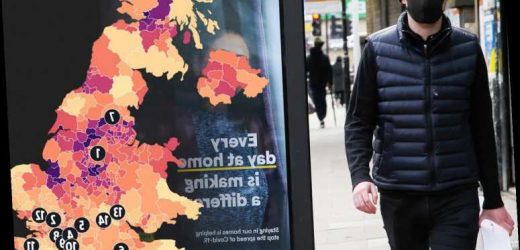CORONAVIRUS cases are still rising in 15 places in England and this interactive map reveals if your area is on the list.
Official data from Public Health England (PHE) states that 299 areas have seen a fall in infection rates – with just one area remaining unchanged.
? Read our coronavirus live blog for the latest news & updates…
Over the seven days to March 5, cases in the London borough of Newham, in East London have stayed at 56.1 cases per 100,000 – the equivalent of 198 cases.
It is estimated that around 360,000 people live in the borough – which had previously been one of the most infected areas of the country at the end of last year.
Cases in the capital as a whole of decreased in recent weeks and government data shows that in the seven days up to March 4, 3,902 cases were identified in London.
This is down from 5,895 cases the previous week.
While infections seem to be falling across the country, with 95 per cent of areas having seen a fall, ministers have warned Brits to hold off when it comes to booking holidays overseas.
Transport secretary Grant Shapps warned "we can't guarantee" international travel will definitely restart on May 17 because the decision will depend on the state of the pandemic.
And he advised people desperate for a break in the sun it would "make sense" to wait until after April 12 – when a panel of experts will report back on how to restart tourism – before making bookings.
Infection rates are key to society reopening and schools have opened their doors once more this week.
Rates have dropped considerably in the last few weeks but there are still 15 areas where infections are on the up.
Cases in the Derbyshire Dales have jumped from 63.6 cases per 100,000 to 132.7.
In Welwyn Hatfield in Hertfordshire cases have seen a slight rise from 60.1 to 66.6.
The area recorded its first Covid-19 cases on March 6 last year.
East Devon has also witnessed an increase from 41.7 to 54.7.
Public Health Devon this week stated that there had been a spike in cases in the over 85s.
The experts claim that the rise is down to an outbreak in a care home in the Sidbury area.
Public Health Devon said there was no evidence of wider community spread.
Infection rates in Basingstoke and Deane have increased from 50.4 to 53.8 and in South Bucks they have also increased from 45.7 to 50.
South Somerset has seen just one new case in the last seven days, cases per 100,000 have gone from 46.9 to 47.5 – the equivalent of an increase from 79 to 80 cases.
Looking further North and Craven in North Yorkshire has gone from 31.5 cases per 100,000 to 47.3.
Kingston upon Thames has also jumped from 40.6 cases to 44.5 per 100,000.
Cases in Elmbridge in Surrey have gone from 35.1 to 37.3, nearby Guilford has also seen an increase from 34.2 to 34.9.
Data shows that infection rates in all other boroughs in Surrey have decreased over the last seven days.
Infections in Canterbury in Kent have increased from 24.2 to 33.3.
Despite the rise in cases, infection rates in the area remain very low.
Infection rates below 50 mean that less than one in 2000 people tested positive for the virus in the area.
Uttlesford in Essex has witnessed a slight jump from 24.1 cases per 100,000 to 29.6.
Cases in Tewkesbury in Gloucestershire have also risen slightly with just one more case having been reported in the area in the last seven days.
This means that cases have gone from 27.4 per 100,000 to 28.4.
Other areas that have seen small increases include West Oxfordshire where cases have gone from 25.3 to 26.2 and West Devon, where they have increased from 7.2 per 100,000 to 10.8.
It comes as it was yesterday reported that Covid deaths have fallen by 80 per cent in a month across the UK.
Another 5,766 new infections were recorded, down 65 per cent on last month's jump and a sign the spread is slowing.
Yesterday's rise in deaths is 78 per cent smaller than it was on February 9, when the UK's Covid death toll grew by 1,052.
It is also lower than it was last Tuesday, when 343 deaths and 6,391 positive cases were recorded.
The Tuesday before that, 548 deaths and 8,489 new infections were reported in Britain.
Source: Read Full Article





